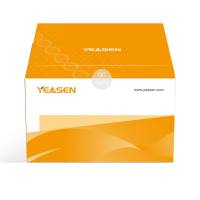从成体昆虫中分离活细菌的方法 Isolation of live bacteria from adult insects
互联网
Isolation of live bacteria from adult insects
Related Journal & Article Information
Introduction
This protocol was developed to isolate Wolbachia from adult Drosophila, but it can be adapted for other insects. In some insects leg removal prior to isolation facilitates hemolymph extrusion 1 . This is not necessary for Drosophila.
Conventionally, for transfection experiments, Wolbachia are isolated from embryonic cytoplasm 2-5 . In comparison, the main advantages of this method are:
Better elimination of debris from ultra-filtration.
Faster; requires less manipulation.
Less yolk is co-purified with the bacteria. Due to the associated auto fluorescence, yolk becomes an issue for imaging (see also “Live imaging of Wolbachia”).
Materials
Reagents
2. Ultrafree � MC Centrifugal Filter Unity. This low binding microporous filter assembled on a microcentrifuge tube allows filtration of biological solutions (Millipore Corporation, Bedford, MA). Wolbachia diameter sizes vary from 0.5 to 1.5 micrometer. Two filters size were tested. In our hands, even the smaller one did not seem to reduce yield and produced a cleaner product:
0.65 micrometers, Catalogue No. UFC3 ODV
5.0 micrometers, Catalogue No. UFC3 OSV
3. 70% EtOH (v/v)
4. Sterile H20
Equipment
Time Taken
Procedure
1- Collect 50-100 adult insects (for Drosophila, females will give higher yield). Anesthetize on CO2. Keep the flies and 70% EtOh on ice.
2- Transfer anesthetized flies to the Centrifugal Filter (5 or 0.65 micrometer).
3- Wash 5 times with 70% ethanol. Invert the tube a couple of times between washes. This step is to collect as much debris and sterilize the fly surface as much as possible.
4- Spin for 5-10 seconds in tabletop microcentrifuge at low speed setting (around 1,000 g) to dispose most of the EtOH
5- Wash 3x with sterile H2O.
6- Spin 5-10 seconds to eliminate most of the water
7- Transfer the filter unit to a sterile microcentrifuge tube.
8- Spin for 3 minutes at around 10,000 g. In case yolk is not desired (e.g. for visualization) low speed centrifugation is recommended to avoid disruption of eggs inside females. Speeds can go as low as 1,000 g for 3 minutes.
9- From 50 to 100 flies the yield is around 10- 20 µl. To maximize the bacteria viability, keep on ice all the time. The exudates can be used for transfection into other hosts (see “Transfection of Wolbachia into adult hosts), cell culture or imaging.
The presence of bacteria can be quickly verified with a DNA stain (see “Live imaging of Wolbachia”). As a control, always compare with hemolymph isolated from an uninfected stock.
Troubleshooting
Critical Steps
Anticipated Results
References
2. Boyle, L., Oneill, S. L., Robertson, H. M. & Karr, T. L. Interspecific and Intraspecific Horizontal Transfer of Wolbachia in Drosophila. Science 260, 1796-1799 (1993).
3. Poinsot, D., Bourtzis, K., Markakis, G., Savakis, C. & Mercot, H. Wolbachia transfer from Drosophila melanogaster into D. simulans: Host effect and cytoplasmic incompatibility relationships. Genetics 150, 227-37. (1998).
4. Xi, Z., Khoo, C. C. & Dobson, S. L. Wolbachia establishment and invasion in an Aedes aegypti laboratory population. Science 310, 326-8 (2005).
5. Braig, H. R., Guzman, H., Tesh, R. B. & Oneill, S. L. Replacement of the Natural Wolbachia Symbiont of Drosophila-Simulans with a Mosquito Counterpart. Nature 367, 453-455 (1994).
6. Clark, M. E., Anderson, C. L., Cande, J. & Karr, T. L. Widespread prevalence of wolbachia in laboratory stocks and the implications for Drosophila research. Genetics 170, 1667-75 (2005).
Acknowledgements
Keywords
transfection
transinfection
horizontal transfer
artificial transfer









